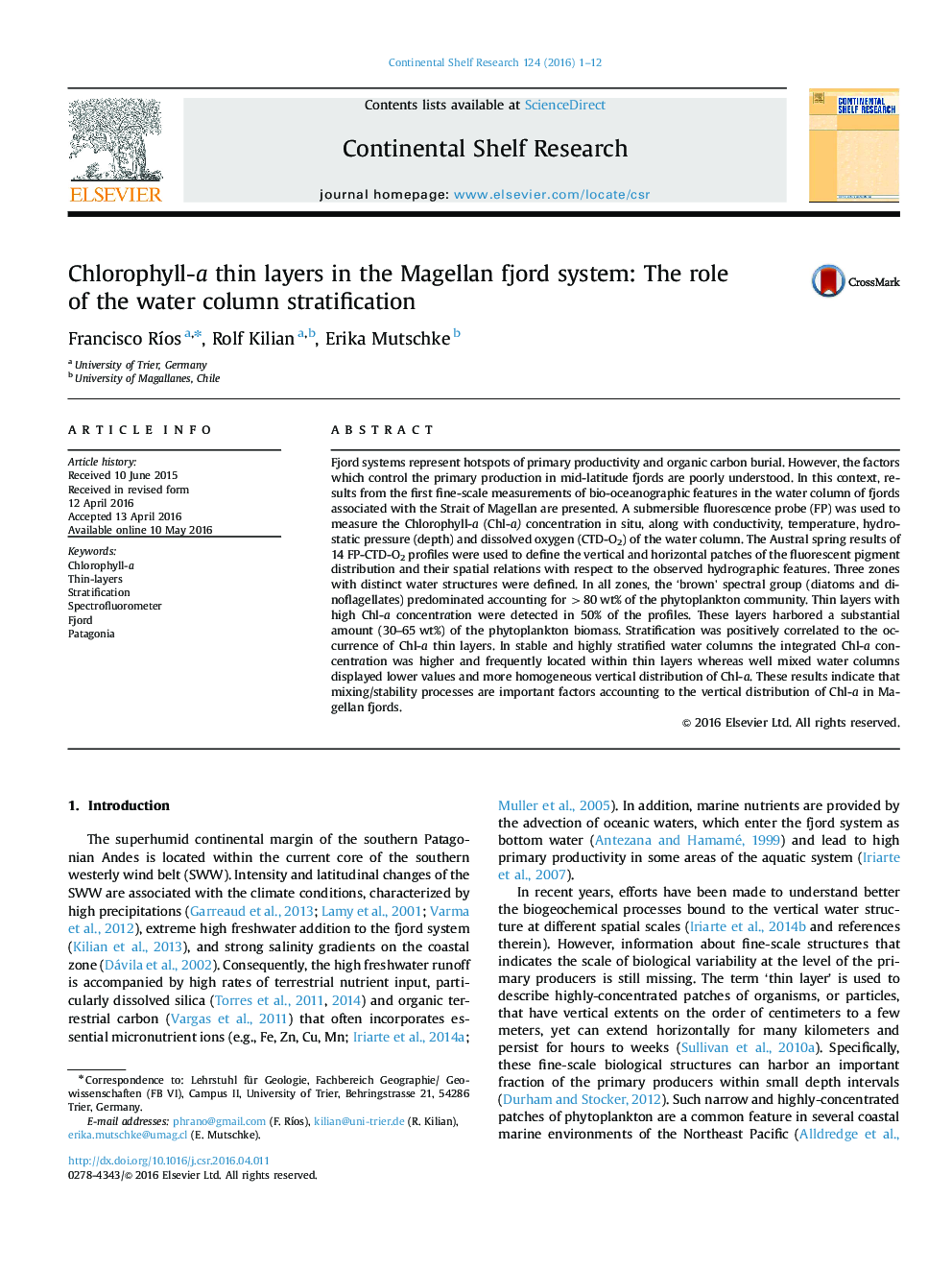| Article ID | Journal | Published Year | Pages | File Type |
|---|---|---|---|---|
| 6382891 | Continental Shelf Research | 2016 | 12 Pages |
Abstract
Fjord systems represent hotspots of primary productivity and organic carbon burial. However, the factors which control the primary production in mid-latitude fjords are poorly understood. In this context, results from the first fine-scale measurements of bio-oceanographic features in the water column of fjords associated with the Strait of Magellan are presented. A submersible fluorescence probe (FP) was used to measure the Chlorophyll-a (Chl-a) concentration in situ, along with conductivity, temperature, hydrostatic pressure (depth) and dissolved oxygen (CTD-O2) of the water column. The Austral spring results of 14 FP-CTD-O2 profiles were used to define the vertical and horizontal patches of the fluorescent pigment distribution and their spatial relations with respect to the observed hydrographic features. Three zones with distinct water structures were defined. In all zones, the 'brown' spectral group (diatoms and dinoflagellates) predominated accounting for >80Â wt% of the phytoplankton community. Thin layers with high Chl-a concentration were detected in 50% of the profiles. These layers harbored a substantial amount (30-65Â wt%) of the phytoplankton biomass. Stratification was positively correlated to the occurrence of Chl-a thin layers. In stable and highly stratified water columns the integrated Chl-a concentration was higher and frequently located within thin layers whereas well mixed water columns displayed lower values and more homogeneous vertical distribution of Chl-a. These results indicate that mixing/stability processes are important factors accounting to the vertical distribution of Chl-a in Magellan fjords.
Related Topics
Physical Sciences and Engineering
Earth and Planetary Sciences
Geology
Authors
Francisco RÃos, Rolf Kilian, Erika Mutschke,
